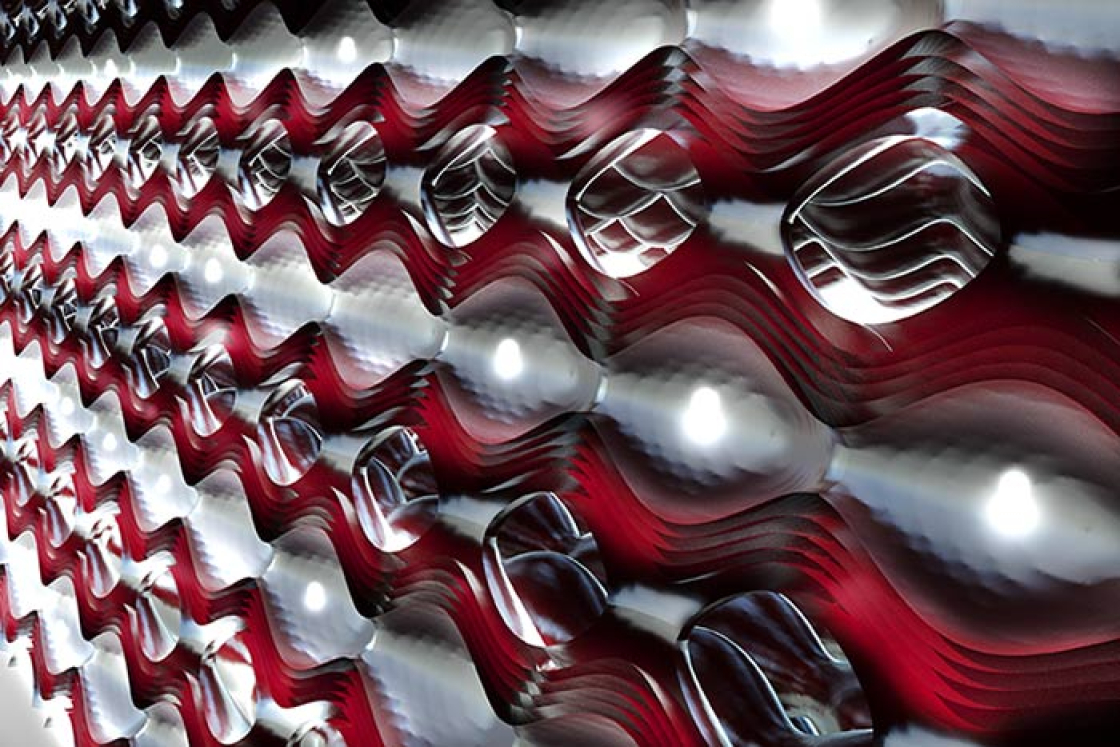By continuously measuring ultracold KRb molecules in tubes (with weak lattices) created by intersecting laser beams, researchers suppress the loss of the molecules during experiments. The loss suppression is due to the quantum Zeno effect.
There’s exciting news from JILA’s ultracold molecule collaboration. The Jin, Ye, Holland, and Rey groups have come up with new theory (verified by experiment) that explains the suppression of chemical reactions between potassium-rubidium (KRb) molecules in the KRb quantum simulator. The main reason the molecules do not collide and react is continuous measurement of molecule loss from the simulator. That it works this way is a consequence of the quantum Zeno effect, also known as the watched pot effect, as in the proverb “A watched pot never boils.”
In essence, if researchers investigate a quantum system by continuously measuring it, things stop changing altogether. The strange laws of quantum mechanics are responsible for this odd behavior. These laws dictate that the act of measurement itself forces the KRb molecules into a particular quantum state. And, if measurements occur continuously, the molecules will stay in that state because the measurements themselves are collectively preventing any change in the quantum states of the molecules. The idea that continuous measurements prevent a quantum system from evolving is the essence of the quantum Zeno effect, named for the Greek philosopher Zeno of Elea.
Thus, if you adjust a quantum simulator so that (according to the laws of classical physics) the molecules inside it get lost faster and faster because of colliding and reacting, then the laws of quantum mechanics will actually make the molecules react slower and slower until they eventually just sit there forever and never get lost. It’s almost as if two KRb molecules “know” from the continuous measurements not to hop into the same place in the simulator because they would react and disappear if they did. New theory by the Holland and Rey groups shows explicitly how this works. It not only verifies the quantum Zeno effect, but also demonstrates that older theories that attempted to explain this kind of quantum behavior incorrectly predicted loss to happen five times faster.
In practical terms, the previous and less accurate theories suggested that the number of KRb molecules in the simulator would be about one molecule per two lattice sites (which are energy wells created by intersecting laser beams). In practice, however, that calculation predicted too many molecules. Right now, the number of KRb molecules in the simulator is fewer, typically one per every 10 lattice sites. And, this just happens to match the amount of lattice filling predicted by the new theory. Clearly, increasing the lattice filling is going be a lot harder than researchers originally expected it to be.
Untangling this complicated quantum behavior required the brainpower and dedication of 13 JILA researchers. The theory team comprised graduate student Bihui Zhu, recently minted Ph.D. Michael Foss-Feig, research associates Johannes Schachenmayer and Michael Wall, senior research associate Kaden Hazzard as well as CU Professor of Physics Murray Holland and CU Associate Research Professor of Physics Ana Maria Rey. Holland and Rey are CTQM Fellows. The experimental team included research associates Bryce Gadway and Bo Yan, graduate students Steven Moses and Jacob Covey, and Fellows Debbie Jin and Jun Ye.

